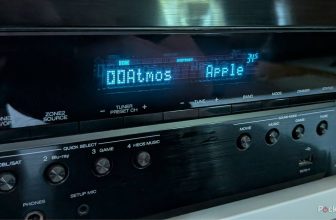Android Auto is a useful utility that’s built into just about every modern Android smartphone. Conceptually similar to the iPhone’s CarPlay functionality, Android Auto allows you to beam the contents of your Android phone directly onto your vehicle’s infotainment display — assuming your car or truck supports the ability to do so, of course.
More and more vehicles are shipping with Android Auto support, which should hopefully increase adoption of the platform and allow for better feature parity with Apple CarPlay, the latter of which is broadly available across many newer-generation cars on the market. There’s undeniable utility to casting music playback controls, navigation interfaces, and more from a smartphone onto a car dashboard.
In my experience, when Android Auto works, it works well. Unfortunately, however, proverbial bumps in the road can sometimes arise. Here are three commonly-encountered Android Auto problems, as well as some corresponding tips and tricks to consider when troubleshooting said issues.
Spotty wireless connectivity
Bluetooth connection issues can be a real pain
If you’re making use of a wireless Android Auto setup, then a combination of Bluetooth and Wi-Fi is quietly working under-the-hood to establish and to maintain phone-to-vehicle communication. Everything from audio streaming to sending and receiving calls requires a stable connection to function properly.
For the most part, wireless Android Auto setups are fairly reliable, because your phone will always be in proximity to your vehicle while you’re out on the road. Sometimes, however, a choppy connection can occur, resulting in stutters, lags, media playback cutting out without notice, and dropped phone calls.
Needless to say, a spotty wireless connection is less than ideal when you’re busy focusing on the road, and it can prove especially problematic when actively relying on a navigation app like Google Maps or Waze to reach your destination. Here are some tips and tricks that can help improve the reliability of your wireless Android Auto connection:
- Ensure your vehicle is Android Auto compatible. A full list of car models that support the feature can be found by visiting this online Android resource.
- Ensure that your Android phone’s Bluetooth and Wi-Fi radios are both switched on.
- On your Android phone, uninstall and then reinstall the Android Auto application from the Google Play Store. Alternatively, clear the app’s storage data and cache files by navigating to Settings > Apps > See all apps > Android Auto > Storage & Cache > Clear storage + Clear Cache.
- Remove your vehicle from Android Auto and then re-establish a fresh connection. This can be done from your Android phone by navigating to Settings > Connected Devices > Connection preferences > Android Auto > Previously connected cars > [your car] > Forget. Once complete, restart the setup process from the beginning.
An inoperable wired setup
Not all USB cables are created equal
If you elect to set up your Android Auto via a wired connection, you’ll still want to consider the aforementioned wireless connectivity troubleshooting methods if you encounter choppy performance. The reason for this? While Bluetooth lacks the bandwidth required for the full audio/visual Android Auto experience, it’s still used to facilitate phone calls and for other less data-intensive features. A wired Android Auto setup doesn’t replace the use of Bluetooth — rather, it swaps Wi-Fi-reliant data communications with a tethered cable solution.
It’s worth noting that not all USB cables are fully compatible with Android Auto. Although most USB-C cords look physically identical to one another, they can vary greatly in both bandwidth throughput and in power delivery ratings. On its official Android Auto Help website, Google recommends using a high-quality USB cable that’s under 3 feet (1 meter) in length, and to avoid using USB hubs or cable extenders. The company also suggests defaulting to the cable that came with your Android phone out of the box, as most phone manufacturers ship cables that meet the standards of the USB Implementers Forum.
Unresponsive voice dictation
Hands-free voice commands are useful when they work
One of the greatest perks of operating an Android Auto-compatible vehicle is the ease of which you can interface with your phone while actively (and safely) commuting to your destination. By simply saying “Hey Google” or pressing the dedicated microphone button on your vehicle’s stirring wheel, you can dictate all sorts of commands. These include making a phone call, sending a text message, replying to a message, getting driving direction, and launching specific musical tracks or podcasts.
If you’re experiencing troubles with your Android Auto’s hands-free feature (false positives, incorrect dictation results, inability to recognize your voice, etc.), there are a few things to look for that might be the root cause of the problem. Here are some troubleshooting considerations:
- Ensure your vehicle is Android Auto compatible. A full list of car models that support the feature can be found by visiting this online Android resource.
- Ensure your Android phone’s Bluetooth antenna is turned on and that an active connection has been established with your vehicle.
- Check your Android phone’s microphone permissions. This can be done by navigating to Settings > Apps > See all Apps > Android Auto > Permissions > Microphone > Microphone access for this app and then selecting Allow only while using the app from the list of available options.
- Locate your vehicle’s built-in microphone and ensure that the port isn’t blocked off or covered by anything.
Trending Products

Wireless Keyboard and Mouse Combo, ...

Lenovo New 15.6″ Laptop, Inte...

Dell Inspiron 15 3520 15.6″ F...

Acer Nitro KG241Y Sbiip 23.8” Ful...

Wireless Keyboard and Mouse Combo, ...

Zalman i3 NEO ATX Mid Tower Gaming ...

GAMDIAS ATX Mid Tower Gaming Comput...

Sceptre Curved 24-inch Gaming Monit...

Acer SH242Y Ebmihx 23.8″ FHD ...








